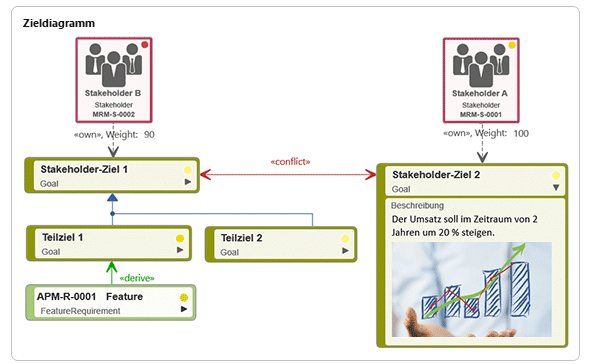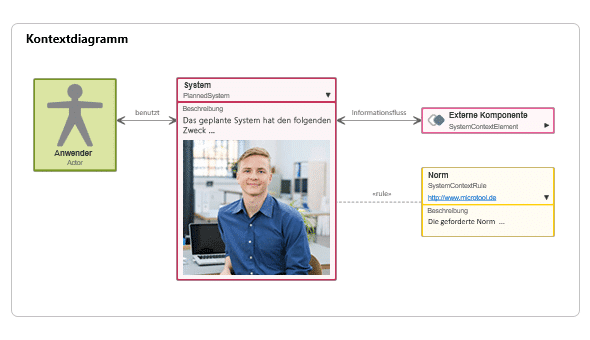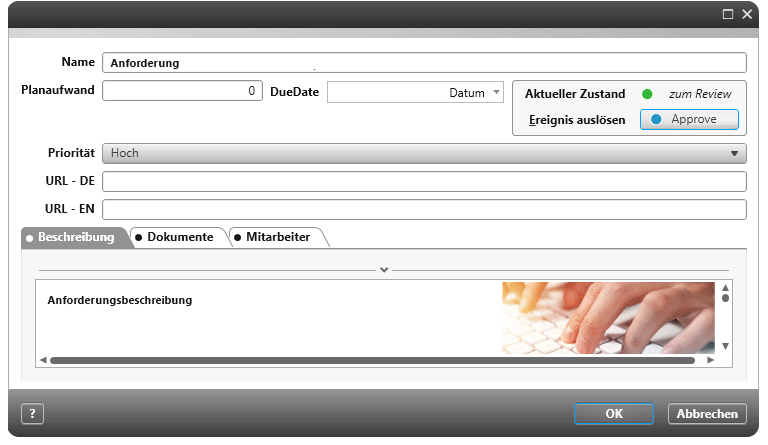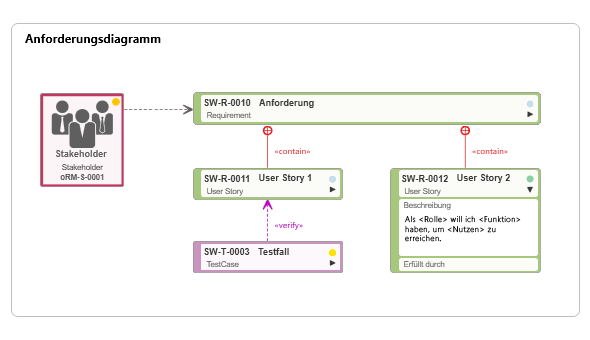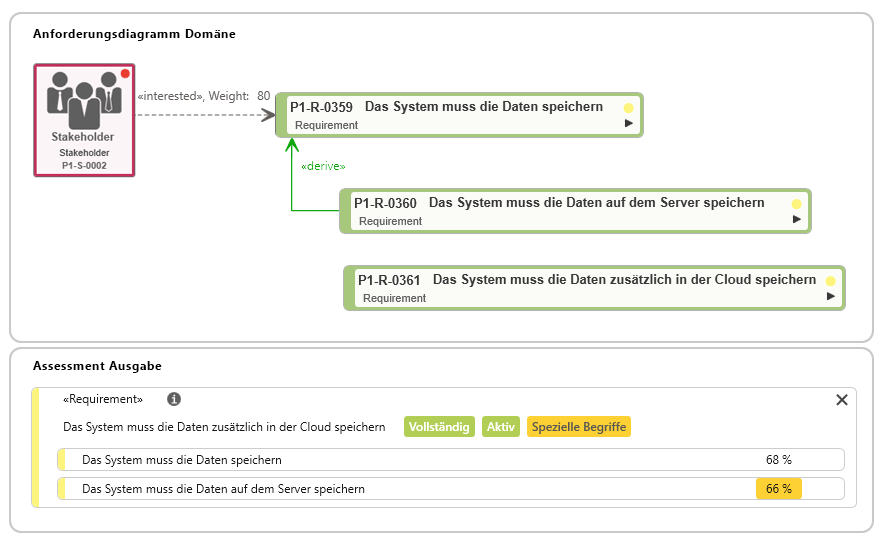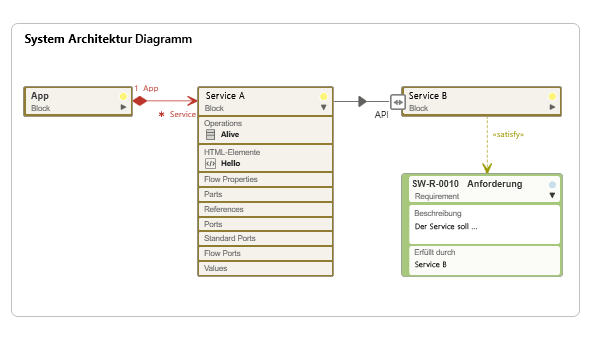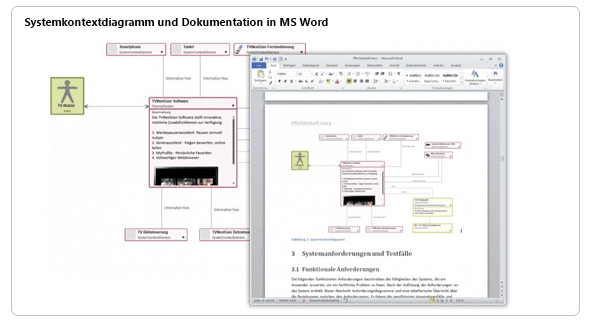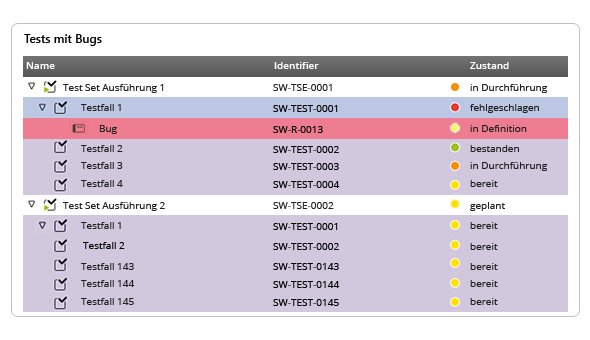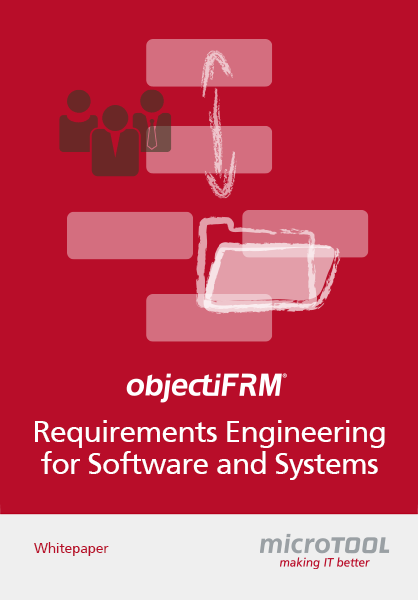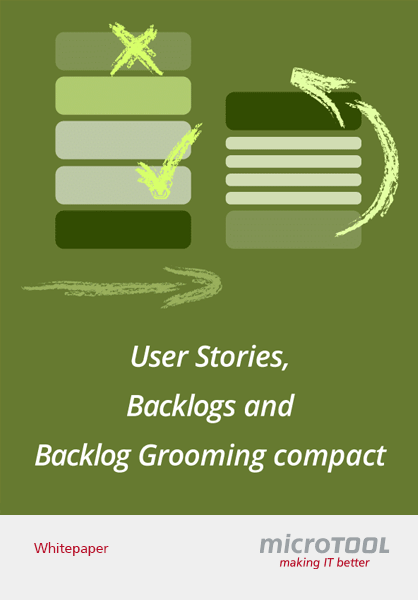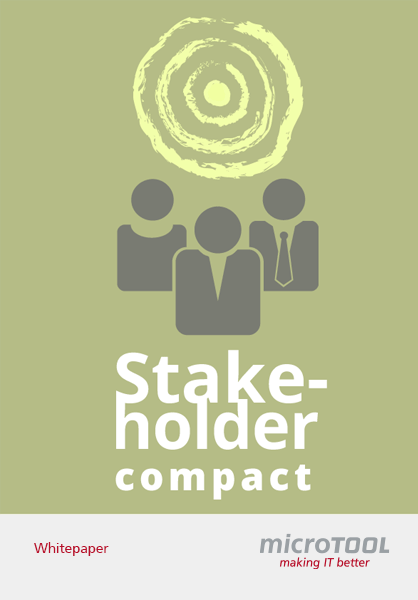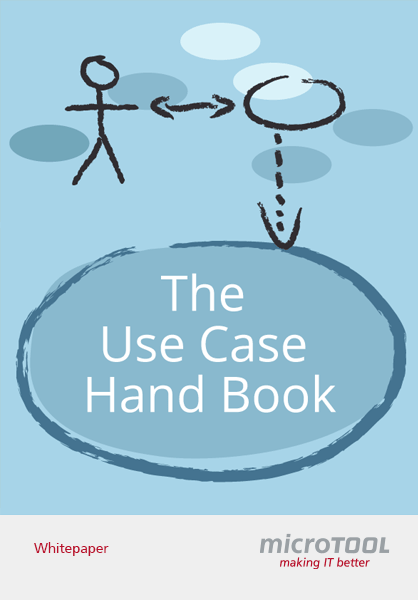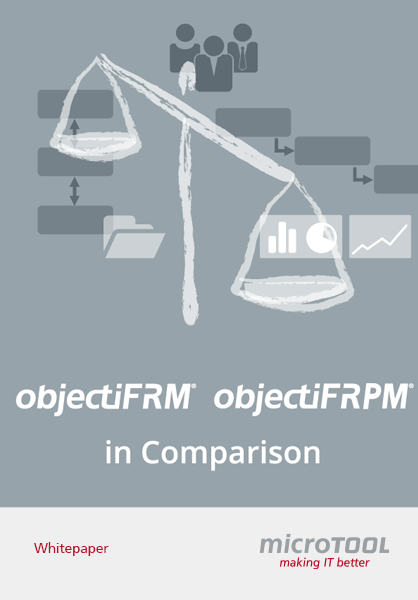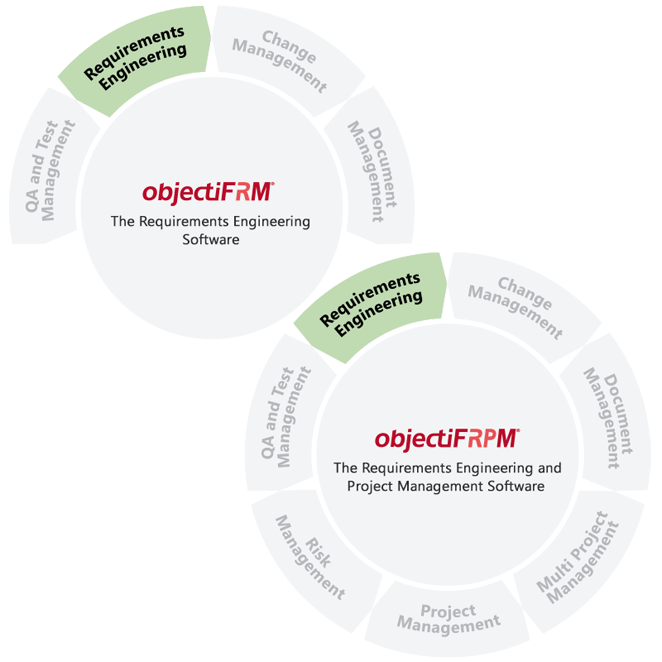
Requirements Engineering According to the IREB Method Standard
– High Quality Activities Add long-term Value
Stakeholder Analysis
Stakeholder analysis is a key determinant for sustainable success. That’s why objectiF RPM and objectiF RM support you with features like goal diagrams, context diagrams, workflows for reviews, instant messaging and video conferencing. Visualizing use cases with needs and wishes of personas opens up new perspectives. Communicate your progress and turn these analysis results transparent to get feedback on an ongoing basis.
Demarcation of the System Context
The scope of projects often grows rapidly because no boundaries were defined at the beginning. Prevent scope creep by demarcating the system context. objectiF RM and objectiF RPM provide you with system context diagrams for graphically modeling context boundaries, influencing rules and standards, as well as use case diagrams for modeling use cases with actors and interfaces.
Requirements Gathering
Varying styles of writing often leave room for different interpretations of requirements. Avoid misunderstandings by recording requirements, user stories, test cases, etc. consistently with the help of sentence templates. With objectiF RM and objectiF RPM you can assign attributes to requirements, prioritize and structure them together with version control. The simple import and export of requirements from MS Excel, MS Word, Jira, ReqIF and other formats enables fast exchange across the entire supply chain.
Requirements Modeling
A picture is sometimes worth a thousand words. With objectiF RM and objectiF RPM you can visualize workflows, dependencies, refinements, cardinalities, system correlations and architectures with models from the UML and SysML. Use goal diagrams, requirements diagrams, use case diagrams, activity diagrams, class diagrams, package diagrams and block diagrams for requirements analysis and definition. Of course, all the requirements you work on in diagrams are managed in your backlogs.
Quality Improvement through AI Integration
System Architecture Design
The architectural design demonstrates how a new system will meet the functional requirements of stakeholders. However, designing the system architecture also means implementing quality requirements. The focus here is on the maintainability of the system. objectiF RM and objectiF RPM use class diagrams, package diagrams and block diagrams to help you structure a component system that can be changed, extended and adapted easily. Refine requirements and architecture at the same time while always providing full traceability.
Requirements Documentation
Requirements specifications or vision statements and product backlogs in agile projects form the basis for collaboration between customers and contractors or between stakeholders and the development team. With objectiF RM and objectiF RPM, you can generate documentation simply by one click. Similar to all artifacts, documents are also under version control. Of course, you can track all modifications using the history, restore revisions, create baselines, and even configure approval workflows using state machines.
Verification and Validation of Requirements
Have the requirements been fulfilled? With objectiF RM and objectiF RPM you can keep track of the entire lifecycle of a requirement. Define test cases or acceptance criteria during the creation of requirements and plan the execution of test sets with full traceability back to source. Define workflows for your individual test management with state machines, and always know the degree of fulfillment of your requirements.
How to Implement Your Requirements Engineering Process
in Our Tools?
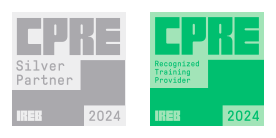
Check Our Free Whitepapers on Requirements Engineering Topics
Learn More about Our RM Tools in Our Free Webinars
Register now for our free webinars. Ask questions right away and learn more about the requirements engineering solutions in action.

